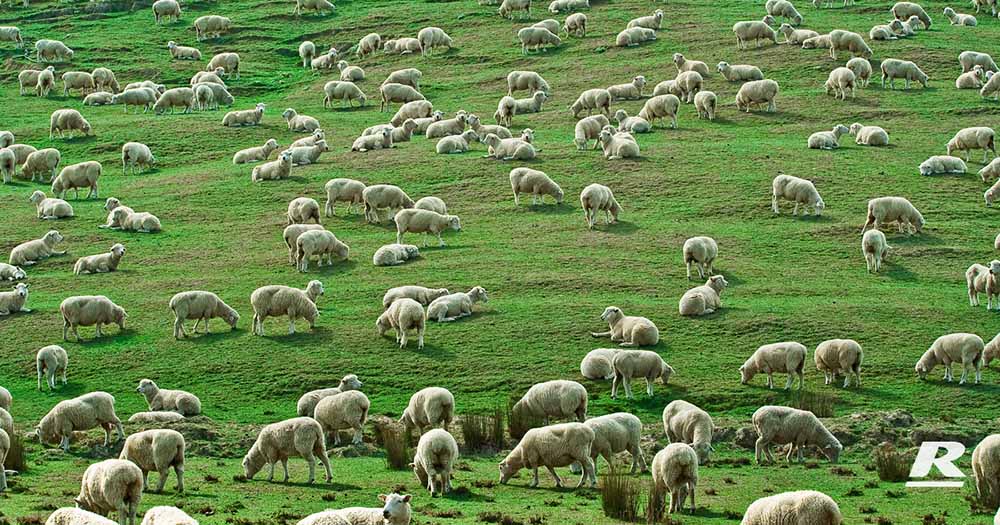What is Pregnancy Toxaemia?
Pregnancy Toxaemia is a metabolic disease that occurs mostly in ewes carrying multiple foetuses in their last trimester. During this period, her energy demand doubles but her Dry Matter Intake (DMI) is low, placing her in a negative energy balance. Ovine Ketosis, twin lamb disease and lambing sickness are all names for Pregnancy Toxaemia (Preg Tox). Pregnancy Toxaemia is a common problem, occurring in over 10% in ewes carrying multiple foetuses and only 1% of single bearing ewes in Australia[1].
Essentially, pregnancy toxaemia is the result of low blood sugar (glucose) caused by a combination of poor/ insufficient FOO (food on offer), her nutrition requirements doubling and a reduction of rumen capacity due to the growing foetuses occupying more space in the third trimester.
To meet her energy requirements, she will start to draw upon her own fat stores; producing ketones as an energy source to supply to her muscles. The more she relies on her own fat stores as an energy source, the more ketones produced; too many ketones will become toxic to the ewe. This is ketosis and will be the onset of Pregnancy Toxaemia.
Ewes that lamb down during the autumn or winter seasons are more susceptible to pregnancy toxaemia due to the quality and availability of feed. Especially if we have a late autumn break, feed is often of poor quality and high NDF, making it difficult for the ewe to achieve a positive energy balance.
What are the causes of Pregnancy Toxaemia?
Contributing factors that can place the ewe into a negative energy balance and become the onset to Pregnancy Toxaemia are…
- Increased energy demand
- Decreased rumen size
- Inadequate nutrition in the third trimester
- Age – Older ewes are more susceptible
- Body Condition Score (BCS) – either too low or too high.
- Stressful conditions
- Short periods without feed
A ewe who has come down with Pregnancy Toxaemia is often very weak, cast in the paddock and unable to stand up. Ewes may also appear blind and walking around with their head held up high.
What treatments are available?
There are treatments available but prevention is the key to this metabolic disease.
There are oral solutions containing Propylene-glycol, and injectables’ which contain glucose on the market to treat ewes with Pregnancy Toxaemia.
Response to these treatments can be slow, for more information about the best treatment please contact your vet.
Once treated with an appropriate treatment; if the ewe is able to eat, allow her access to clean water, fresh hay and a grain ration high in carbohydrates.
Nutrition as Prevention
As already mentioned, Pregnancy Toxaemia will occur in the last trimester in pregnancy. Ewes carrying multiple foetuses should be on 1800 kg/DM/ ha and single bearing ewes on 1200 kg/DM/ha.
Supplementing ewes most at risks to pregnancy toxaemia with a high carbohydrate ration that includes Barley & Lupins to meet the increasing energy demands of the ewe. Pasture alone is not sufficient to meet their needs, especially since their rumen capacity has decreased. It is recommended that supplementation begins six weeks before lambing is schedule to start as well as given good quality pasture that is not grazed too heavily during this time.
Other prevention methods
Prevention should start early; ewes should be pregnancy scanned and separated into mobs according to the number of foetuses they are carrying such as multiples, single and those ewes who are empty. This way you are able to feed them accordingly for their energy requirement.
It is important that the ewes do not become too fat or too skinny; check the ewes mid pregnancy to keep them on track. BCS for singles should be between 2.8 – 3.5 and multiples should be between 3.5-4. Mortality rate of ewes with a BCS below 2.5 is significantly higher compared to ewes at a BCS of three.
Management procedures that will place the ewe under stress and involves tipping the ewe up (ie. Shearing, crutching) should not be conducted from 6 weeks out until after lambing. Whereas management such as drenching, vaccinations and drafting should stop a couple weeks out from lambing. Management practices that will stop the ewe for eating for more than 6 hours are to be avoided during this time.
Weather conditions also play a part in Pregnancy Toxaemia; ewes at high risk need to be monitored and supplemented accordingly.
The key to this metabolic disease is prevention, making sure that the ewes do not go into a negative energy balance and changing a few management practices will reduce the risk of pregnancy toxaemia occurring.
Looking for a high carbohydrate grain supplement to feed your ewes during the last 6 weeks of pregnancy; why don’t you give us a call and have a chat to one of our nutritionist on 1300 REID FEED or enquire here >
 Author
Author
Kate Phillips
Gippsland Territory Manager – Ruminant
Sources: [1] Casburn. G. (2016). Pregnancy Toxaemia in breeding ewes. Prime Fact 1199, second edition. NSW Department of Primary Industries.

 Author
Author